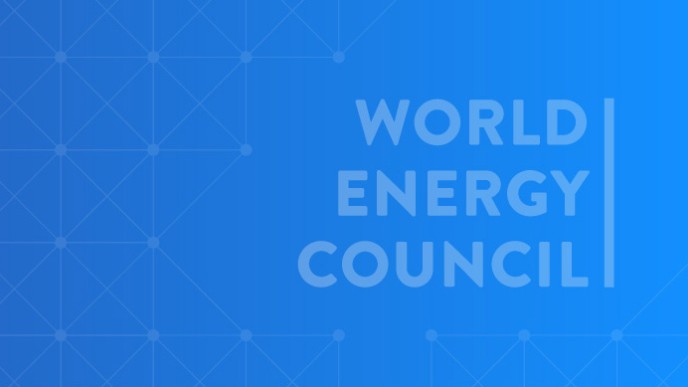Making Energy Transitions (ET) Happen
This blog was originally posted on LinkedIn by our CEO and Secretary General of the World Energy Council Dr Angela Wilkinson.
.png)
Picture: From post-doctoral climate change researcher to tackling energy transitions
In the 1980s, I was a post-doctoral researcher producing climate change impact and energy-environment risk assessments. In those days, model-based temperature changes ranged from -2oC to +12oC, compared with pre-industrial annual averages.
When I read the most recent IPCC AR6 Synthesis Report, there was a sense of ‘déjà vu’– an increasing precision of scientific assessment and the uncertainty of effective action.
The world has warmed 1.1oC since pre-industrial times, because of increasing greenhouse gas emissions associated with human activities. Attributed impacts include extreme weather events and sea-level rise – and an ever-longer list of risks to everyone, everything, everywhere.
The hope of keeping humanity on track to a safe operating space and within a ‘safe limit’ of climate change impacts is no longer just an urgent challenge of mitigation - but also adaptation. Reducing carbon dioxide, methane and other greenhouse gas emissions must go together with investing in building resilience to the impacts of climate change, especially in vulnerable communities.
I welcome the IPCC’s pragmatic emphasis. Fighting for every decimal point of temperature increase is worthwhile and multiple feasible and effective options are now available to progress climate resilient development.
I agree that transformational changes are more likely to succeed when there is trust, solidarity, and a fair share of the benefits. I would also add energy justice to climate justice and welcome a good quality dialogue on who decides what is ‘fair’ and on what basis.
Empty Words vs Powerful Action
But the IPCC report is another sobering reminder that the gap between global ambition and impact has grown over the last 30 years.
How useful then is it for anyone to keep using fear of the future to drive action? To call for new promises to move the net-zero goal posts forward by 10 years? Or to keep repeating the phrase ‘more innovation and cooperation’ without reflecting on the ‘how to’ and ‘who with’?
Achieving a net zero emissions world energy system by 2050 is essential, not easy, nor enough. Paris is a milestone, but France is not the destination.
The ‘Ultimate Prize’ is ten billion better lives on a healthy planet and a safe operating space for diverse and connected energy societies to peacefully coexist and flourish.
Putting People Back into The Story of Energy
The ‘how to’ make energy transitions happen at a pace and scale which involves hundreds of thousands of smaller, place-based steps, and a ‘who with’ engagement of people – women, workers, the next generation – who have so far been ignored.
Social transformation and institutional innovation are much messier that the clean and simple ‘s-curve’ of technology innovation. Bold experiments in place-based community-led, systemic leadership and change management are underway and present an opportunity to coordinate and consolidate new leading practices.
National governments and multi-lateral organisations were not designed for a warmer, wobbly, and wicked problem world. It is also difficult to bridge supply-centric energy leadership mindsets with different perspectives on decentralised and user-centric electricity systems.
The energy transition process needs to more transformational, transparent, and trustworthy. Which is why our emphasis is on humanising energy and showcasing stories of change which inspire people and diverse communities and enable them to better understand their roles and choices.
Whilst technology alone cannot solve the climate resilient development challenge meaningful new solutions will involve combinations of technological innovation, with financial and social innovation.
From more investment into renewable energy, to the refining of carbon capture utilisation and storage, to understanding the role digitalisation can play in smarter transitions, we must use all levers to achieve net negative, climate resilient and regenerative development.
This includes recognising – and accepting – the importance of nature-based solutions in addressing climate change and anticipating how to better govern AI-driven and geoengineering solutions.
Reality Follows the Narrative
The gap between ambition and impact is action; and that missing piece comes when we humanise energy and put people at the forefront of the energy transitions. People need to become involved and better understand their roles and choices and be able to hold their leaders and each other to account.
If we continue to extol a narrative which does not include the people and communities affected by the pandemic, energy and climate crisis, we cannot expect them to see themselves in the story. Collaboration works only if we reframe it to incorporate everyone, and they can work their own narratives of better energy future.
Our ambition for COP28 and the 2024 World Energy Congress is to show how we are making energy transitions happen in ways that directs more resources in building new capabilities and tools. This is essential to supporting the roles of citizens, consumers and diverse place-based, communities in moving faster, fairer, and further forward swiftly and at scale.
Uncertainty creates anxiety and these are emotional times. It is important, however, to avoid being fearful of the future and instead show that energy transitions are happening in all regions. The story of how we come together to produce generative and transformative change for all rests on hope; and that comes with telling stories about what is being done, not what could be done.





